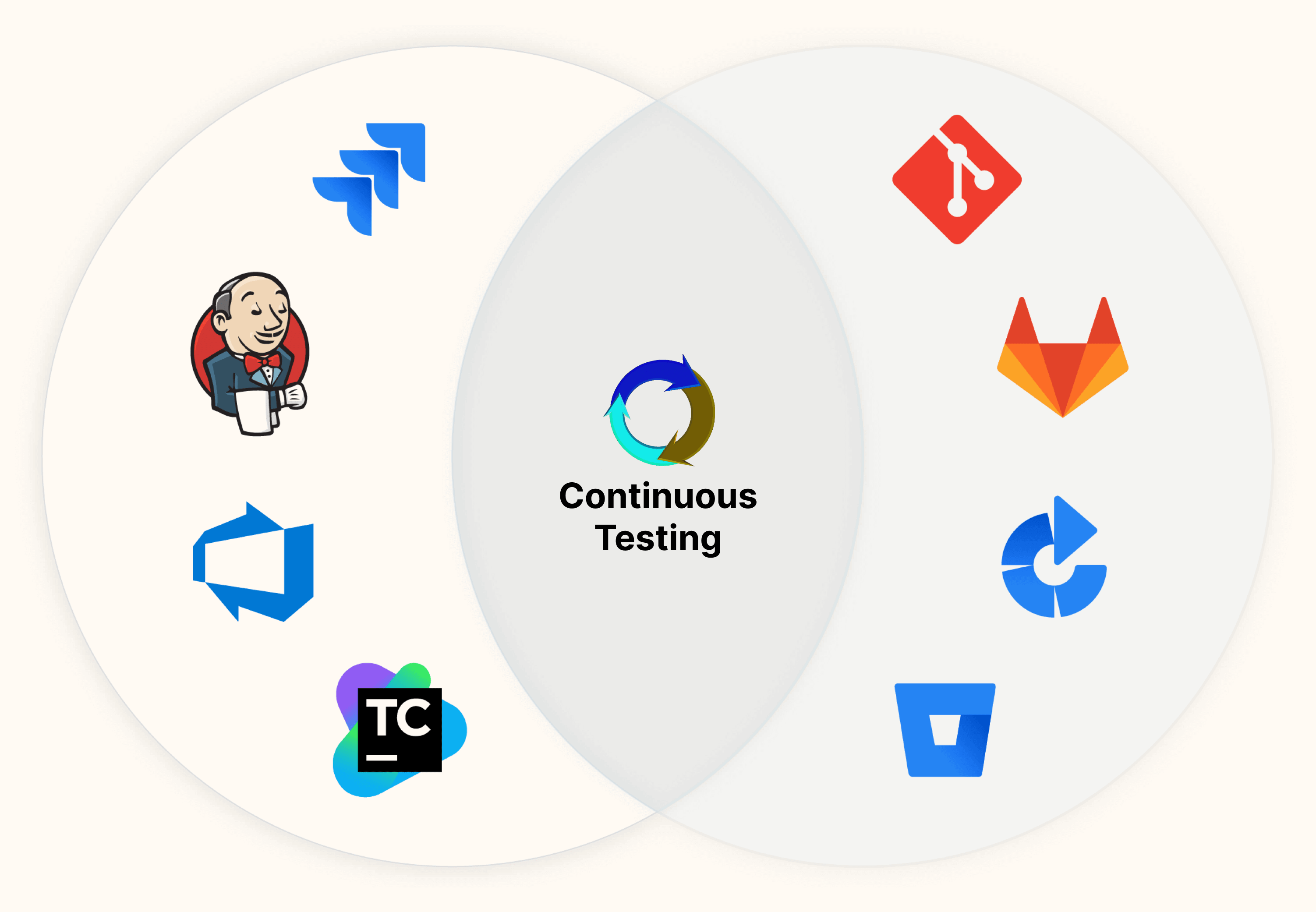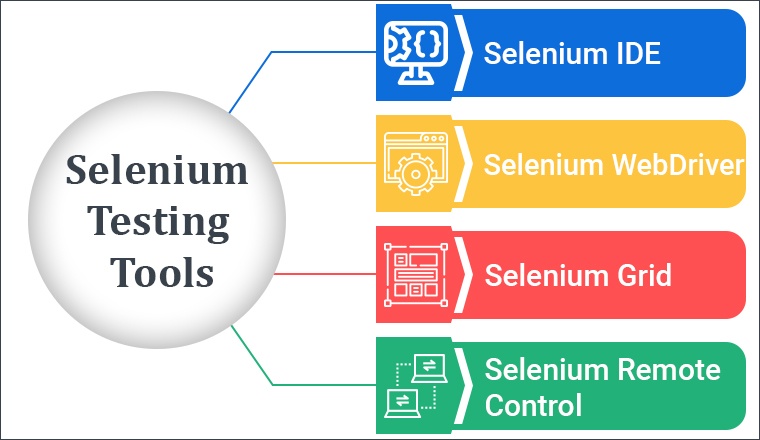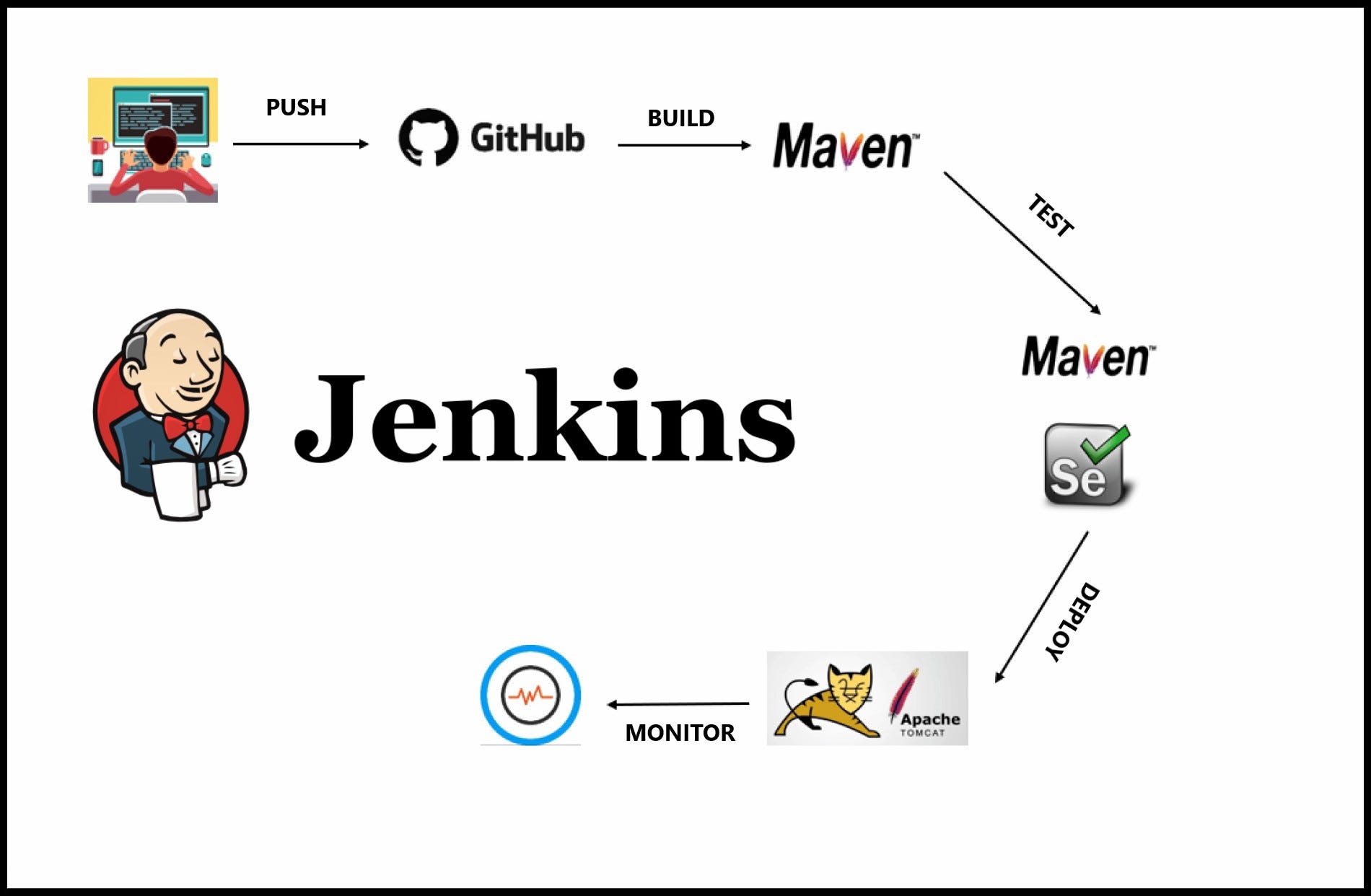Ship Faster, Fix Less: A Guide to Continuous Testing
31 May, 2024
22
22
0
Contributors

Before I jump into Continuous Testing, let's touch base on what testing is, along with how and when it plays a crucial role.
Testing phase provides you with feedback which will help you determine if further changes are needed. Faster feedback is better for you.
Why? Because by going down the wrong road too far, you risk having to rework more than you originally developed. In some cases, it may not be possible to fix the defects because the feedback came in two days before your scheduled deployment.
So, what do you do? You push the defects into production, hoping to fix it someday. Will defects always get fixed in production? You know the answer!
What is continuous testing?
Continuous testing is a process of software testing in which an application is tested at every stage of software development life cycle (SDLC). It aims to shorten the systems development life cycle and provide continuous delivery with high software quality.

Why does it matter?
The process of software development began with requirements gathering, where documentation outlined the software's functionalities and user stories. This was followed by design and architecture, where the software's blueprint was created, defining how components would interact and how users would navigate. Once the blueprint was finalized, developers translated the design into functional code using chosen programming languages.
Whenever software is developed, it goes through the testing phase to ensure the quality of the software and to identify bugs to be fixed by the developers.
Traditionally testing is done after the software is developed completely. The development of software is split into many parts. Once a team completes developing a part of the software then that part is given to another team and that team hands over the software to another once they complete their part. This continues until the software is completely developed. This method of developing software is known as the waterfall model.
While the waterfall model provides a structured approach with dedicated time for each development phase, its linear progression can hinder flexibility. Adapting to evolving requirements or incorporating feedback later in the process becomes difficult, potentially leading to a final product that falls short of user needs.
But what if there was a different avenue for testing? A faster, more streamlined approach that shatters the bottlenecks hindering collaboration between development and testing teams.
That is where continuous testing becomes valuable. Testing code directly after submitting it to the repository helps detect bugs before any additional code is written. That extra code would then not have to be adjusted to incorporate bug fixes. Talk about saving time!
Why do organisations go for continuous testing?
- It would take a lot of time and manpower to test the software whenever a new feature is added to the software.
- But organizations want more efficient and easier solutions. That’s why organizations adopt a new approach “continuous testing” which delivers faster and seamless development of software and also releases high-quality software in a short period.
- With continuous testing, code is automatically tested as soon as it’s integrated into the previous set of codes.

Methodologies of Continuous Testing
- Unit Tests: This involves testing a piece of code in isolation. Basically testing every method written for the feature. The main objective of this test is to check that the code is working as expected, meaning that all the functionalities, inputs, outputs, and performance of the code are as desired.
- Integration Tests: This involves testing the two modules together. The goal of this test is to check that the integration between the two components is working fine.
- Regression Tests: This is the most widely used test and it is used to check that the existing functionality of the application is working as expected after the latest addition or modification to the code repository,
- End to End Journey tests: These tests are added to check the end-to-end working of the software. The goal of these tests is to check that the end user is able to use the application end to end.
- Shift-left testing: This approach prioritizes software and system testing early in the SDLC to help reduce or prevent significant debugging problems down the road.
- Shift-right testing: This approach prioritizes testing near the end of the SDLC, with a focus on improving user experience, overall performance, failure tolerance and functions.

Benefits of Continuous Testing
- Increased speed: Continuous testing aligns with the fast-paced nature of DevOps and Agile, facilitating quicker software delivery. This acceleration can enhance business processes, including faster go-to-market strategies.
- Catch bugs early: By detecting bugs early in the development cycle, continuous testing significantly improves the overall quality of the code, reducing the likelihood of defects.
- Cost efficiency: With a higher standard of code quality and fewer bugs reaching production, continuous testing aims to offset its initial costs over time.
- Improved security: Continuous testing creates a robust framework that protects applications from unforeseen changes and security threats, both during and after deployment.
- Save Time, Be Awesome: Continuous testing frees up valuable time for developers to focus on innovation. We can spend less time debugging and more time making applications even better!
Continuous testing vs test automation: What's the difference ?
Before the rise of continuous software testing, test automation was the main practice for achieving software quality assurance. Continuous Testing is different from automated testing , it is a process of executing automated tests to get feedback on the business risks associated with the release of a software. Automated testing , on other hand, is a process of executing specific tests via automation rather than doing it manually.

Continuous testing and test automation share common characteristics. Actually, continuous testing cannot exist without automation.
Despite having similarities, though, it’s false to assume that continuous testing and test automation are the same thing. Continuous testing goes beyond test automation. It aims to ensure continuous quality improvement throughout the whole software delivery pipeline.
Continuous testing in devops
As the demand for faster development and delivery of software to customers increases, organizations adopt the agile software development model. Incremental activities are performed continuously in this model.
Nowadays, DevOps is adopted by organizations for software development which uses collaborative processes and the responsibility is shared among the teams. DevOps is another methodology of software development like waterfall and agile. It is better than the previous ones.
This evolution of software development models leads organizations to use automation, Continuous Integration (CI), and Continuous Delivery (CD) that require continuous testing (CT).
In a DevOps environment, continuous testing is performed automatically throughout the SDLC and works hand in hand with continuous integration to automatically validate any new code integrated into the application.

Continuous integration (CI) is a software development practice where developers regularly merge their code changes into a central repository, after which automated builds and tests are run
It most often refers to the build or integration stage of the software release process and entails both an automation component and a cultural component. The key goals of continuous integration are to find and address bugs quicker, improve software quality, and reduce the time it takes to validate and release new software updates.
Testing tools are preinstalled with testing scripts that run automatically whenever new code is integrated into the application. Typically, the tests start with integration testing and move automatically to system testing, regression testing and user-acceptance testing.
The tests generate data feeds from each application module, and the feeds are analyzed to help ensure that all modules impacted by the new code perform as expected. If a test fails, the code goes back to the development team for correction. It is then reintegrated and the testing cycle starts a new.

Once all tests are passed, the application or project moves to the next stage of the SDLC, typically continuous delivery.
Continuous delivery (CD) automates the release of software to production or a staging environment, making it ready to be deployed at any time with manual approval. Code changes are automatically built, tested, and prepared for a release to production. Continuous delivery expands upon continuous integration by deploying all code changes to a testing environment and/or a production environment after the build stage.
Continuous testing in Production
Continuous testing in production (CTIP) is a follow up process of continuous testing, where automated tests not only run in SDLC, but also in the production environment itself. This approach allows for real-time monitoring and validation of software applications with actual users data.
Benefits of CTIP:
- Identify issues early: By continuously testing in production, you can catch bugs and regressions much faster than waiting for user reports.
- Improved user experience: CTIP helps to ensure that new features and deployments don't negatively impact the user experience.
- Faster feedback loop: The data from CTIP can be fed back into the development process, allowing developers to fix issues quickly.
How to Perform Continuous Testing ?
Now that you know what continuous testing is, let’s talk about how you use it. Continuous testing should be implemented at every stage of your CI/CD pipeline. You can set up test suites at every point code changes, merges, or releases. That way, you can run tests at a specific point rather than every test at once. This will help reduce time and effort on testing but still reap quality rewards.
Continuous testing works best by using the most recent build in an isolated environment. Containerization is a great method to help with replicating code outside of the main code repository.
Steps to Perform Continuous Testing
- Use tools to generate test automation suites from user requirements
- Create the test environment
- Use production data to create test data beds
- Test API using service virtualization
- Perform parallel performance testing
The 3 Fundamentals of Continuous Testing
- People :Each person in a team has a unique responsibility in the delivery pipeline for which he/she must possess the required skills. Transparent and regular communication between the members is the key to success.
- Process :Process remains the key in Continuous Testing. Instead of automating everything, focus should be on test automation, code quality, stability, efficiency and providing timely feedback to the developers.
- Technology :Technology should be leveraged to get a stable testing environment and build proper alignment between the team’s skills and software tools.
Frameworks Used for Continuous Testing
Continuous testing tools are designed to help you with your testing efforts. They ensure your success by guaranteeing positive results as you phase through the continuous testing process. Although many tools are available for continuous testing, very few are worth pursuing. Some prominent, continuous testing tools include:

Selenium
Selenium is a software framework that developers with extensive programming skills can use for QA testing. To implement Selenium, it’s vital to understand how frameworks work. In addition, Selenium supports a wide range of popular operating systems (Windows, macOS, Linux) and browsers (Chrome, Firefox, Safari), making it ideal for cross-environment testing.

Jenkins
According to a report, 33.3% of dev teams use Jenkins as their CI/CD tools. You’ll be able to run a series of automated tests and builds after the Jenkins server is set up, ensuring that only stable (and tested) code makes it to production.
Using a tool like Jenkins can simplify the process of assuring high code quality and successful builds. It’s beneficial when working on a single project with a large development team, as traditional approaches might result in much conflicting code commits that may require a lot of troubleshooting.

Appium
Appium is an open-source test automation framework for mobile web apps. It allows you to create cross-browser tests for both desktop and mobile devices.
Appium is a tool for developing, uploading, executing, and examining test results directly in the cloud. Not only does Appium allow you to automate tests on both physical devices and simulators or emulators but it also allows you to do so without recompiling your app. Appium uses a JSON wire protocol to communicate with the application being tested.

Eggplant
Eggplant is a continuous testing tool that provides a one-of-a-kind approach to testing: an image-based solution. Rather than presenting raw test scripts, Eggplant interacts with the Application Under Test (AUT) that simulates users’ points of view.
Eggplant provides a test lab that gives you 24/7 access to continuous testing and deployment. It integrates with other CI/CD tools like Jenkins and Bamboo. This integration allows Eggplant users to perform comprehensive testing, including unit, functional, and performance tests.

Challenges of continuous testing
Despite the benefits of continuous testing, you might face challenges when you implement it at scale for the following reasons:
- Lack of Test Support in Software: Continuous testing becomes more difficult to achieve when testability support is not built into legacy products. Implementing testability features in these products is expensive and hinders the success of continuous testing.
- Absence of Standard Tools: Although there are no standard tools for continuous testing of many different products, teams usually use in-house automation tools or frameworks that lack proper documentation and maintenance. This adds to the problems of the testing team, which will now have to struggle with issues related to the tool/framework.
- Insufficient Testing Infrastructure: Continuous testing requires an investment in additional test environments, which must be maintained, kept up to date, and running around the clock. Advanced tools can help teams implement faster feedback loops, but these costs aren’t high compared to the price incurred due to the poor quality of the product. There is a need for organizational commitment to continuous testing instead of a halfway journey without adequate infrastructure, only adding to the problems your testers face.
- Scaling: All testing frameworks/tools do not scale equally. Slow test execution and lack of support for large test suites can become severe blockers to the dream of achieving continuous testing. These problems are not always apparent at first; they become visible only after many tests have been added to the system and the test system starts to get highly loaded.
Conclusion
In today's fast-paced world, software development needs to be agile and efficient. Continuous testing provides the answer. By integrating testing throughout the development lifecycle, it acts like a safety net, catching bugs early and preventing costly rework. Imagine a world where you can deliver high-quality software faster, with fewer headaches for developers and a smoother experience for users. That's the power of continuous testing. It's not just a process, it's a mindset shift that unlocks the true potential of your development team. So, are you ready to embrace continuous testing and revolutionize your software delivery?

FAQ's
What is continuous testing?
Continuous testing is a software testing approach where applications are tested at every stage of the development life cycle to ensure continuous delivery with high quality.
Why does continuous testing matter?
Continuous testing helps in catching bugs early, reducing rework, accelerating software delivery, improving code quality, and enhancing user experience.
What are the methodologies of continuous testing?
Continuous testing methodologies include unit tests, integration tests, regression tests, and end-to-end journey tests, among others.
What are the benefits of continuous testing?
Benefits of continuous testing include increased speed of delivery, early bug detection, cost efficiency, improved security, and more time for innovation.
What are some challenges of continuous testing?
Challenges of continuous testing may include lack of test support in software, absence of standard tools, insufficient testing infrastructure, and scalability issues.
